Key takeaways
- Activist teacher resources empower educators to inspire critical thinking and challenge the status quo.
- Adapting STEM lessons with hands-on tools like LEGO fosters engagement, collaboration, and problem-solving skills among students.
- Practical steps, such as small challenges and reflective discussions, enhance the learning experience with LEGO in the classroom.
- Celebrating creativity, collaboration, and resilience transforms the learning environment, encouraging a positive approach to failure.

Understanding activist teacher resources
Activist teacher resources go beyond textbooks and worksheets—they are tools that empower educators to challenge the status quo and inspire critical thinking. I remember the first time I found a resource that encouraged students to question injustice; it transformed my classroom atmosphere completely. Have you ever felt that moment when a lesson sparks not just understanding, but a desire to create change? That’s the power these resources hold.
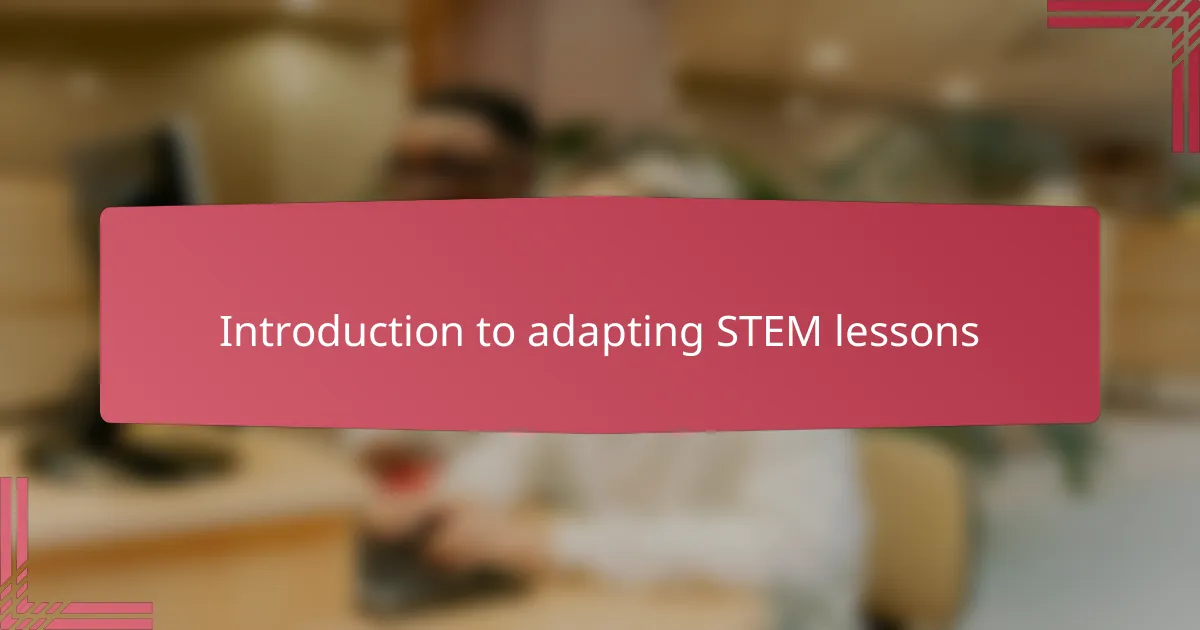
Introduction to adapting STEM lessons
Adapting STEM lessons is more than tweaking activities; it’s about making science and math come alive in ways that resonate with every student. I recall the moment I realized my traditional lessons weren’t reaching all learners—some students seemed disengaged or overwhelmed. Have you ever noticed that spark missing when complex concepts are delivered only through lectures or textbooks?
When I started experimenting with hands-on materials, I saw curiosity replace confusion almost immediately. It felt like unlocking a door for students who previously felt locked out of STEM. What if we could create learning experiences that not only teach facts but also invite students to explore, question, and innovate?
This shift requires us to rethink how we design lessons, focusing on interaction and creativity rather than rote memorization. Incorporating adaptable tools means embracing flexibility—something I found essential when responding to the diverse needs in my classroom. Isn’t it time our STEM lessons reflect the dynamic, problem-solving nature of the world outside school walls?
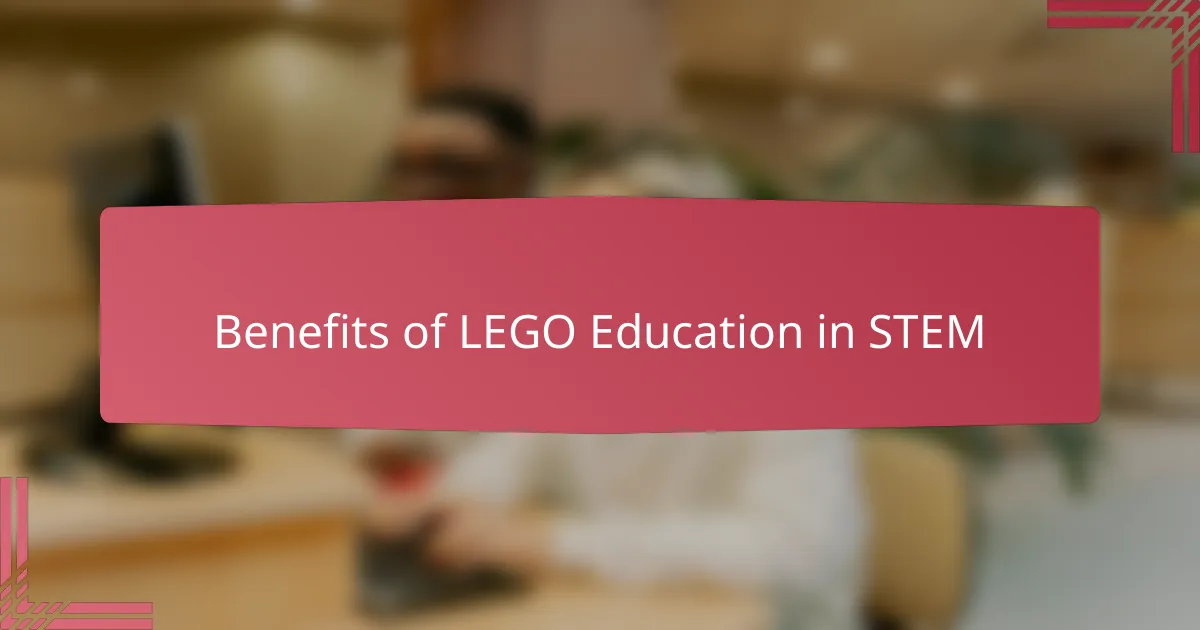
Benefits of LEGO Education in STEM
One of the benefits I’ve noticed with LEGO Education in STEM is how it transforms abstract ideas into tangible experiences. When my students snap together LEGO pieces to build circuits or machines, their eyes light up in a way I rarely saw during textbook readings. Hasn’t there been a time when you wished your students could physically grasp concepts instead of just imagining them?
I was struck by how LEGO encourages collaboration without even trying. In group projects, students naturally take on different roles—some designing, others testing, and most importantly, all learning from each other. It reminded me that STEM isn’t just about individual knowledge; it’s about teamwork and communication—skills we often overlook but are critical in real-world innovation.
Moreover, the instant feedback LEGO provides is invaluable. When a creation doesn’t work as expected, students don’t get discouraged; instead, they tinker, test, and try again. This trial-and-error process fosters resilience and creative problem-solving, which I believe are the true heart of STEM education. Who wouldn’t want their classroom to be a space where failure is just the first step toward discovery?
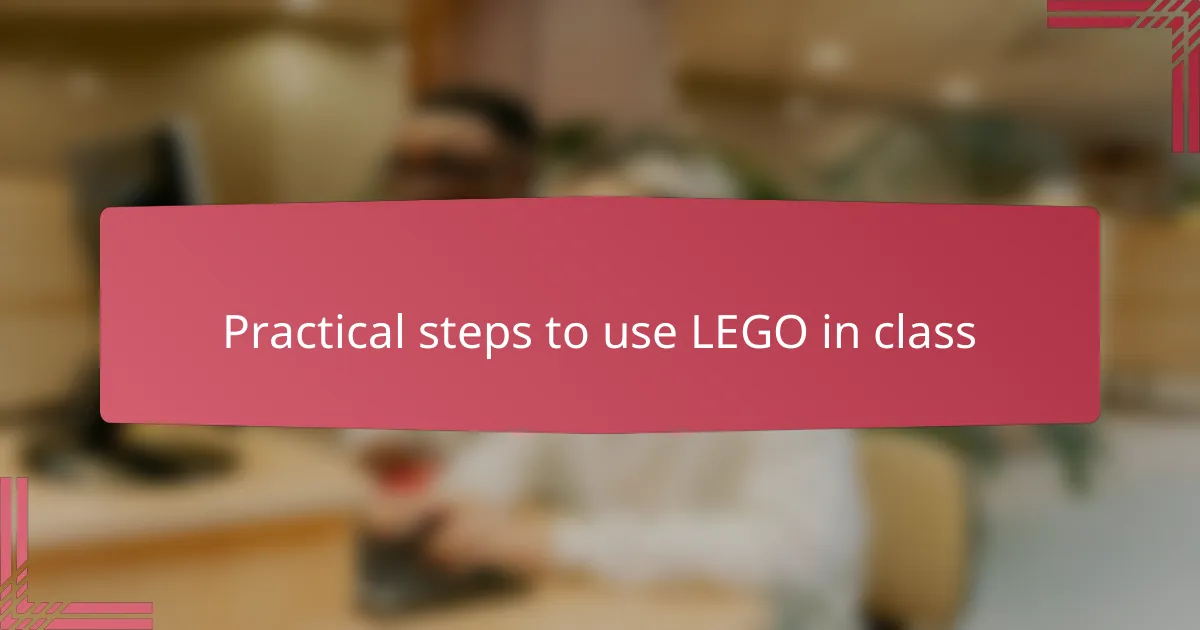
Practical steps to use LEGO in class
Starting with small, open-ended challenges has been my go-to when introducing LEGO in class. I remember giving my students a simple task like building a bridge or a vehicle, then watching how their ideas unfolded in unexpected ways. Have you noticed how such prompts ignite creativity without overwhelming students?
Next, organizing materials and introducing clear but flexible guidelines helped me maintain focus without stifling exploration. Setting time limits or defining goals gave my students a gentle structure, yet they still felt free to experiment. Doesn’t balancing freedom and direction make learning feel both exciting and purposeful?
Finally, I always carve out moments to reflect together after building sessions. Asking questions like “What worked?” or “What would you try differently?” transformed those hands-on activities into deeper learning experiences. From my experience, these conversations are where true understanding and growth take root. Have you tried pausing to reflect with your class after active projects? It’s surprisingly powerful.

Examples of adapted STEM lessons
When I adapted a lesson on simple machines using LEGO gears and pulleys, I was amazed to see students who usually struggle with abstract concepts suddenly excited to experiment. One group built a working crane model, and their discussions about leverage and force became so vivid, it felt like they were discovering physics all on their own. Have you ever witnessed a moment when hands-on learning turns confusion into genuine curiosity?
In another lesson, I challenged students to design their own LEGO robots to solve a community problem. Watching them brainstorm, prototype, and iterate sparked a natural flow of creativity and collaboration that textbooks can rarely achieve. It reminded me that adapting STEM lessons with LEGO not only teaches content but also nurtures empathy and real-world problem-solving skills.
I also adapted a coding lesson using LEGO robotics kits, which helped demystify programming for my students. Instead of lines of code on a screen, they programmed their robots to navigate mazes, turning abstract logic into playful challenges. Have you noticed how turning learning into a game changes the whole energy in the classroom? It’s a shift I never tire of seeing.
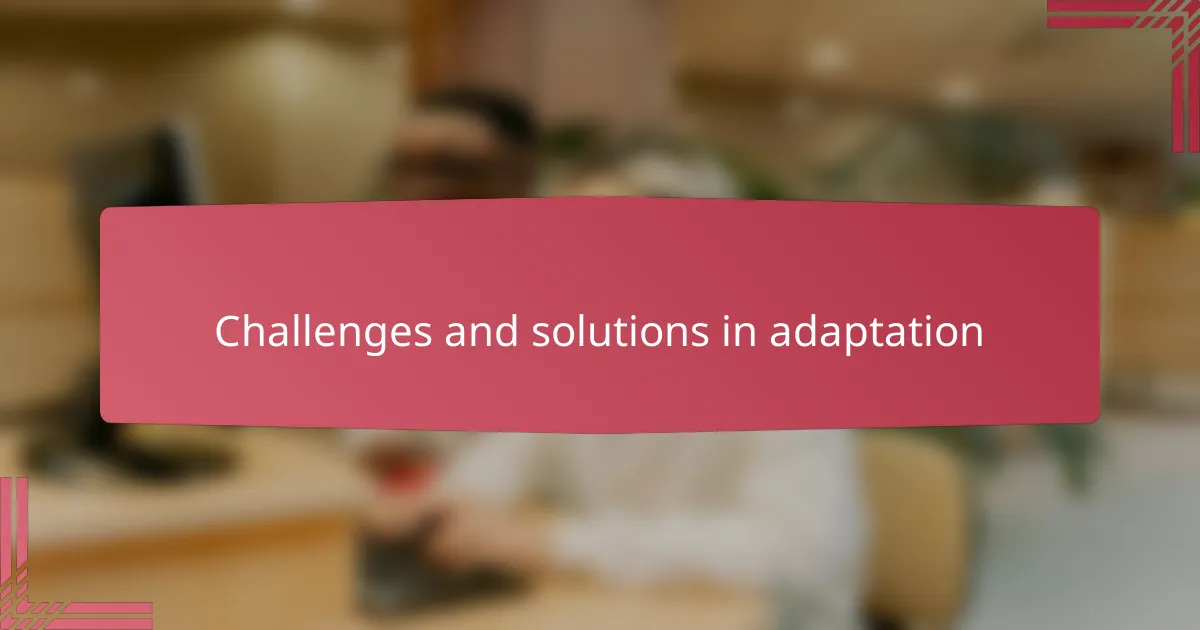
Challenges and solutions in adaptation
Adapting STEM lessons with LEGO wasn’t without bumps at the start. I struggled to balance open-ended exploration with curriculum goals, wondering if letting students roam free with bricks might lead to chaos. It took trial and error—and a lot of patience—to find that sweet spot where creativity thrived without losing educational focus.
Another challenge I faced was the initial resistance from students who felt intimidated by hands-on projects. Some were so used to traditional worksheets that manipulating LEGO pieces felt frustrating rather than fun. I found that breaking tasks into smaller, manageable steps and celebrating tiny successes helped ease that anxiety and build confidence over time.
Material management posed its own puzzle. Keeping LEGO sets organized and accessible required creating clear systems, otherwise valuable minutes slipped away in search of missing pieces. I crafted simple routines and student roles for tidying up, turning organization into a group responsibility rather than a solo chore—which surprisingly boosted investment in the learning process. Have you ever noticed how shared accountability can transform classroom dynamics?
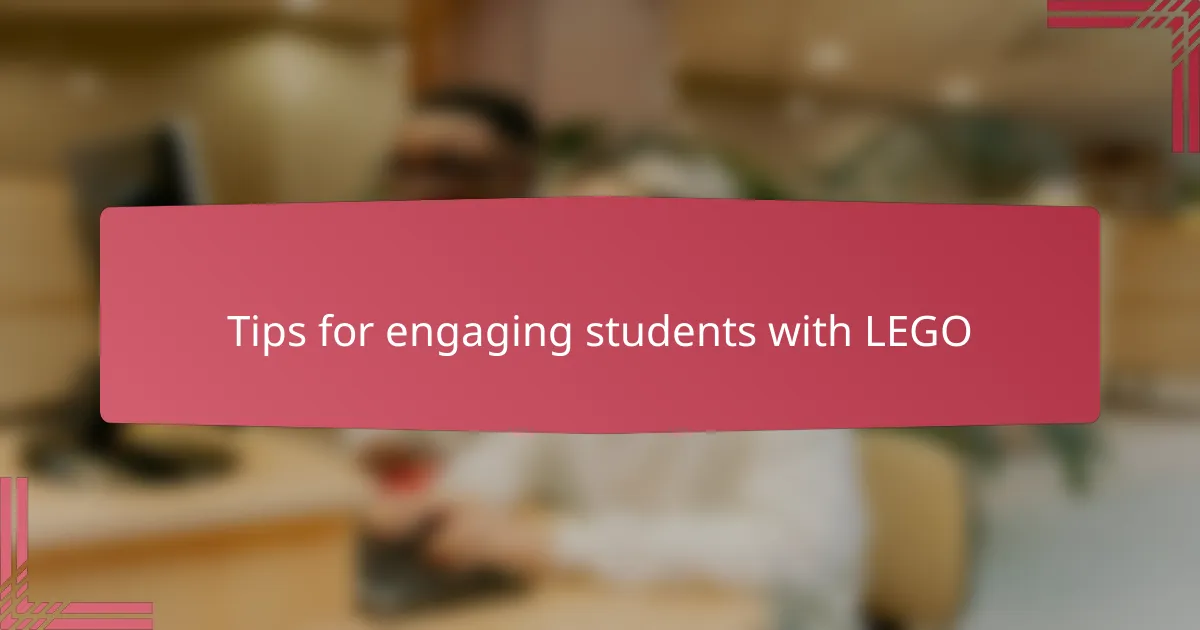
Tips for engaging students with LEGO
One tip that really changed the game for me was letting students lead with their own ideas before jumping into instructions. I’d watch their faces light up as they experimented freely, discovering that imagination is as critical as following directions. Have you seen how giving room for creativity makes engagement shift from obligatory to joyful?
Another approach I found effective was mixing collaboration with friendly competition. When students build in teams but share their creations with the class, it sparks a wonderful energy—pride, curiosity, even a bit of healthy rivalry that pushes everyone to think bigger. It reminded me that learning thrives in lively social spaces, not silent rows of desks.
Lastly, I make sure to celebrate every “failure” as a stepping stone. Once, a student’s LEGO robot kept collapsing, but instead of giving up, they kept adjusting and improving it. That persistence became contagious across the room. Isn’t that a powerful lesson about resilience and innovation that we all want our students to experience?